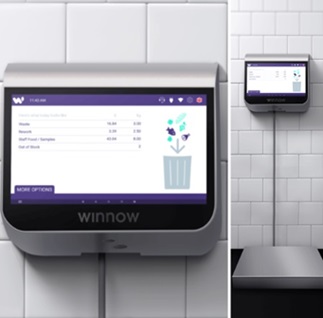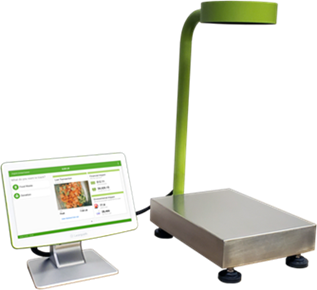NATIONAL REPORT—Artificial intelligence (AI), according to IBM, is technology that enables computers and machines to simulate human intelligence and problem-solving capabilities. When used improperly, AI can wreak havoc. One need not look far in our industry, however, to find examples of how AI is being used in a positive way—in the hotel kitchen to reduce food waste. Two companies utilizing AI in their automated solutions to help hoteliers reduce food waste are Winnow Solutions and Leanpath.
Solutions such as those offered by Winnow Solutions and Leanpath are needed because of the volume of food waste generated by commercial kitchens. Between 5 to 15 percent of the food purchased by commercial kitchens is typically wasted. Every day, one-third of all harvested or processed food goes to waste.
“It’s a global issue,” says Ignacio Ramirez, Managing Director Americas for Winnow Solutions. “It is a hotel issue. It is often due to overproduction. The number of guests can be a bit unpredictable. The portions can be too big. We end up cooking too much. There is a lack of forecasting tools and there are behavioral issues. There is a lot that can be done to improve efficiencies.”
‘Huge’ Opportunity in Banquet Operations
Ramirez adds that breakfast items are some of the most wasteful but are easy to control. Winnow Solutions worked with 13 hotels across the United Arab Emirates to halve breakfast waste. “Banquet operations, viewed as complicated, are areas where there is huge opportunity,” he says. “A la carte restaurants will have a lower level of waste than an all-day or banqueting operation.”
Hotels and casinos are particularly prone to producing food waste because of the common use of buffets and catering guarantees that drive overproduction, Leanpath says. In fact, based on Leanpath data, about 53 percent of a typical hospitality kitchen’s food waste is generated through overproduction.
Brennan Hogan, V.P. of Product for Leanpath, agrees that food waste is a result of behaviors and purchasing planning and production. “Our customers tend to overproduce—due to a lack of forecasting and production planning,” he says. “Plate waste is a big contributor. Often it comes down to portion sizing or menu engineering. Waste during cutting and trimming can also be a big issue.”
Sam Smith, Senior Director of Marketing for Leanpath, related the story of one hotel that kept seeing an unacceptable amount of orange peel waste. The chef challenged the staff. “They came up with a house made marmalade recipe and gave it away as a free sample,” Smith says.
“Food safety is paramount but poor inventory management practices lead to ‘when in doubt, throw it out,’” Hogan adds. “You are always going to see more waste when you are not sure how many people you are going to be feeding.”
“Food waste is often used as a risk mitigation step,” Smith says. “You are avoiding the risk of the last person having a different experience than the first guest.”
According to the United Nations Champions 12.3 report, for every $1 hotels invest in programs to reduce food waste, they save $7 in operating costs.
Using Technology to Recognize What is Being Wasted

Winnow Solutions’ Ramirez says his company’s main food waste solution for high-volume sights is Vision AI. “It is easy to operate,” he says. “[Kitchen staff] don’t need to touch anything on the Winnow system when throwing food away.”
Winnow Solution’s VisionAI can recognize food being thrown away without changing operational processes. One hundred percent of the waste stream is captured.
Designed to require minimal interaction, the Winnow system consists of a camera, smart-scale and tablet. The camera, featuring computer vision trained to identify over 1,000 food items, automatically identifies waste as it is thrown away. The weight and cost of the food discarded is then instantly calculated and displayed.
All captured data is uploaded to the cloud, where food waste from each day is recorded and analyzed. With the preparation of daily, weekly, and monthly reports, kitchens receive the necessary information to drive operational efficiencies, change behaviors, and innovate on techniques in preparation, cooking and plating.
Example of Waste Reduction
Ramirez gave an example of one property and its experience with pineapples. “Trimmings were not done properly,” he says. “The pineapples they were buying were of low quality. With our system they saw a 50 percent reduction in pineapple waste.”
With Winnow Solutions’ reporting capabilities, hoteliers can drill down and track something specific as pineapple waste across different properties.
Winnow Solutions offers different food waste management solutions, some of which do not use AI. VisionControl is an image-led system with built-in camera and connected scale. VisionPW is an optional plate waste solution add-on that includes a motion sensor camera with connected scale that automatically records food waste from plates (weight and images). It connects a kitchen to a customer’s habits, giving one a sense of how much is being wasted.
A WinnowTrack tablet only solution is a solution that provides a simple and affordable way to track food in smaller kitchen environments.
Real-Time Access to Thrown Away Items
For its clients, Winnow Solutions offers a Cloud platform—real-time access to every food portion thrown away. The Winnow app and the food waste tracking software, Winnow Hub, underpin all of the company’s solutions.
“Because no kitchen operates the same way, we offer a solution for every kitchen,” Ramirez says.
Winnow Solutions systems are used by thousands of chefs at more than 2,500 sites worldwide. Kitchens typically save between 2 to 8 percent on food costs. The company says customers can expect to break even on its fees shortly after the second month of operations.
Mandarin Oriental announced in early June that it has already observed a 36 percent reduction in food waste in four pilot hotels thanks to Winnow AI technology: Mandarin Oriental, Hong Kong; Mandarin Oriental Hyde Park, London; Mandarin Oriental, Miami; and Mandarin Oriental Jumeirah, Dubai. The hotels have experienced an annualized net savings of $207,000 and eliminated 66 tons of food waste, and 289 tons in CO2e emissions. Mandarin Oriental expects to have Winnow food waste technology installed across all its hotels by the end of 2025.
In regard to labor time invested, Winnow says on average its system takes three seconds per transaction and 15 minutes per day distributed between all staff members. A user can be trained in as little as 15 minutes.
When asked what advice he would give to anyone looking at food waste management software, Ramirez said, “It should be easy to adapt, implement and use. It shouldn’t add time to your operation. Data accuracy is important. Make sure the pictures reflect what you want to see. Also, the insights provided should be actionable.”
Winnow Solutions has a webinar planned for July 17. The focus: how food waste can be turned into a financial opportunity. Learnings from key partners like Hilton, Marriott and Iberostar will be shared. Find the LinkedIn post with more details here, and the Zoom landing page here.
An Entire Lineup of In-Kitchen Trackers
The Leanpath Food Waste Prevention Platform is a combination of hardware, software and customer success programs that deliver food waste prevention results for any kitchen. Leanpath’s line up of in-kitchen Trackers are built to match a kitchens’ specific needs: from lightweight mobile tools to robust Trackers with image capture capabilities and integrated floor scales.
Leanpath’s AI solution, 360-AI Tracker, captures images of food waste. After a short period of training, the AI software automatically recognizes and identifies the waste. Data entry is reduced, saving kitchen staff valuable time and increasing the accuracy of food waste identification. Leanpath says it has the largest database of food waste images in the world. It leverages that database to make the 360-AI food waste classification faster and more accurate.

Leanpath 360 Bench Scale system, which gives users the power of food waste photography to help identify the root causes of food waste, is available with an upgrade to AI-enabled tracking and will soon be available as a floor model.
While food waste images now train AI software, they remain tools for chefs and managers, showing them exactly the state of the excess food they are tracking. This clarity would not be possible if photos were only captured after food is thrown away. Another benefit of this “above the bin” tracking, the 360-AI can track food destined for donation, which would not be possible if the excess was already in the bin.
Leanpath also offers its Tablet, a small-footprint tracking option, Leanpath Go, Mobile Tracker built to track portioned items quickly and easily; the Leanpath 360 Floor Scale Series 3, for fast, integrated pre- and post-consumer food waste tracking; the Leanpath Scout, a fully-integrated tracker optimized for tracking in medium-volume kitchens; and the Leanpath Station, a small-footprint tracking option for any foodservice environment.
Leanpath’s Hogan says that with AI, the end result is faster tracking with greater accuracy.” The systems are also easy to use, he says, meaning that kitchen staff will be more likely to use them.
A Cloud-Based Analytics Tracker
Data from a food waste Tracker is transformed into clear insights with Leanpath Online, a cloud-based analytics dashboard. Users get a complete view of what a kitchen is wasting and understand why. One can start at the top with trends and top wasted foods and with a few clicks, drill down into individual transactions. One can easily view performance data for single and multi-site programs. Generative AI offers suggestions on what steps to take.
“All the data lands in Leanpath Online,” Smith says. “The more data you have, the better.”
Leanpath Online is available to all Leanpath customers.
Leanpath CEO and founder Andrew Shakman recently hosted a webinar on the future of food waste prevention and how operators must adapt to that changing landscape.
Like Winnow Solutions, Leanpath offers numerous case studies on its website. In one example, the culinary team at the Sheraton Grand Hotel & Spa Edinburgh used Leanpath to cut their food waste value by 64 percent and their food waste weight by 58 percent in just over one year.
“When we look to the future,” says Shakman, “we think that food waste action is going to be more required by law and integrated into everyday practice in the world’s kitchens rather than being a special activity in an innovation context. It’s going to be the norm of how we think and work.”
Glenn Hasek can be reached at greenlodgingnews@gmail.com.






